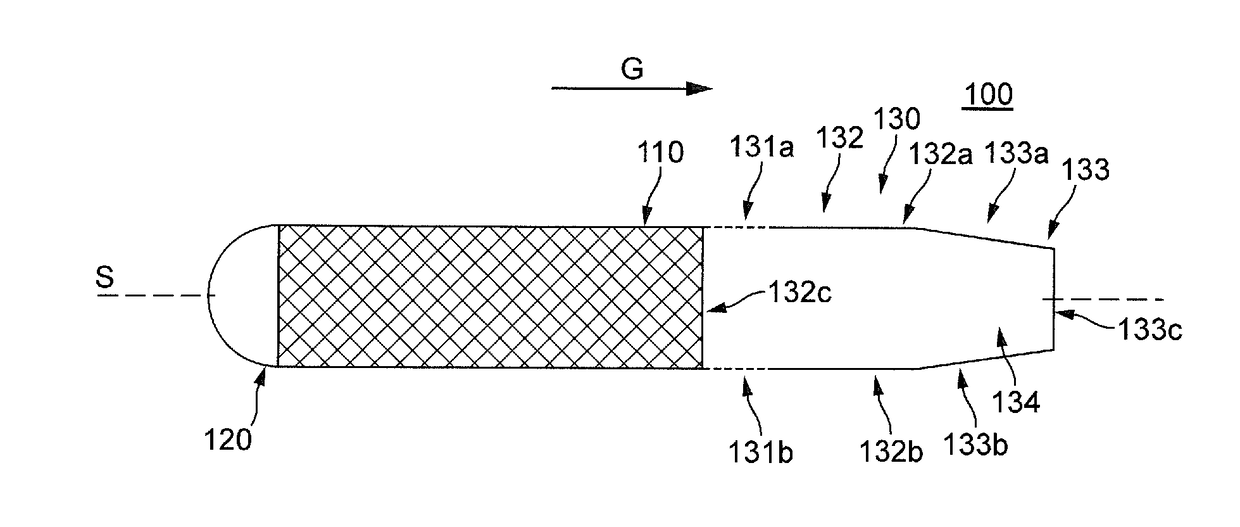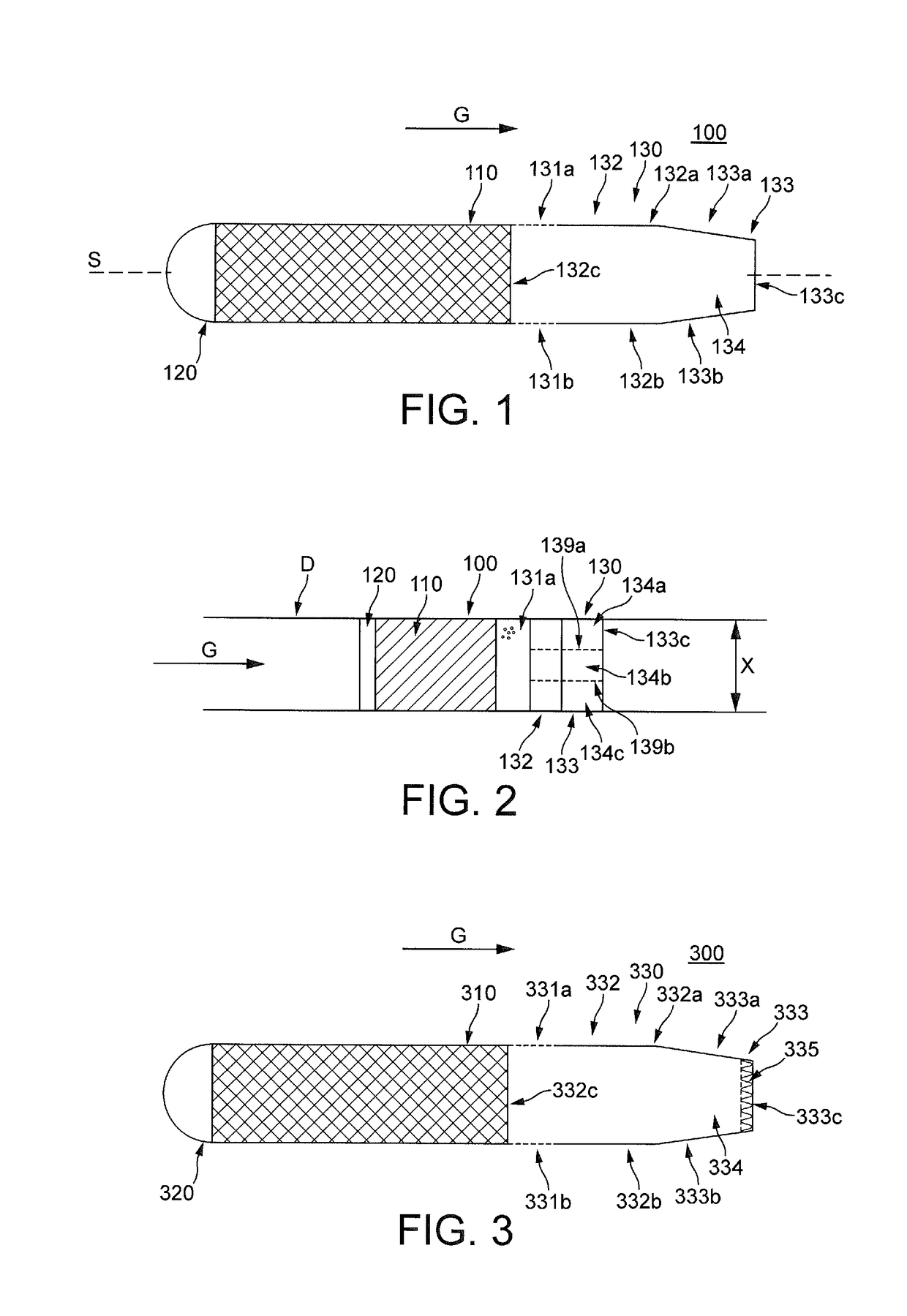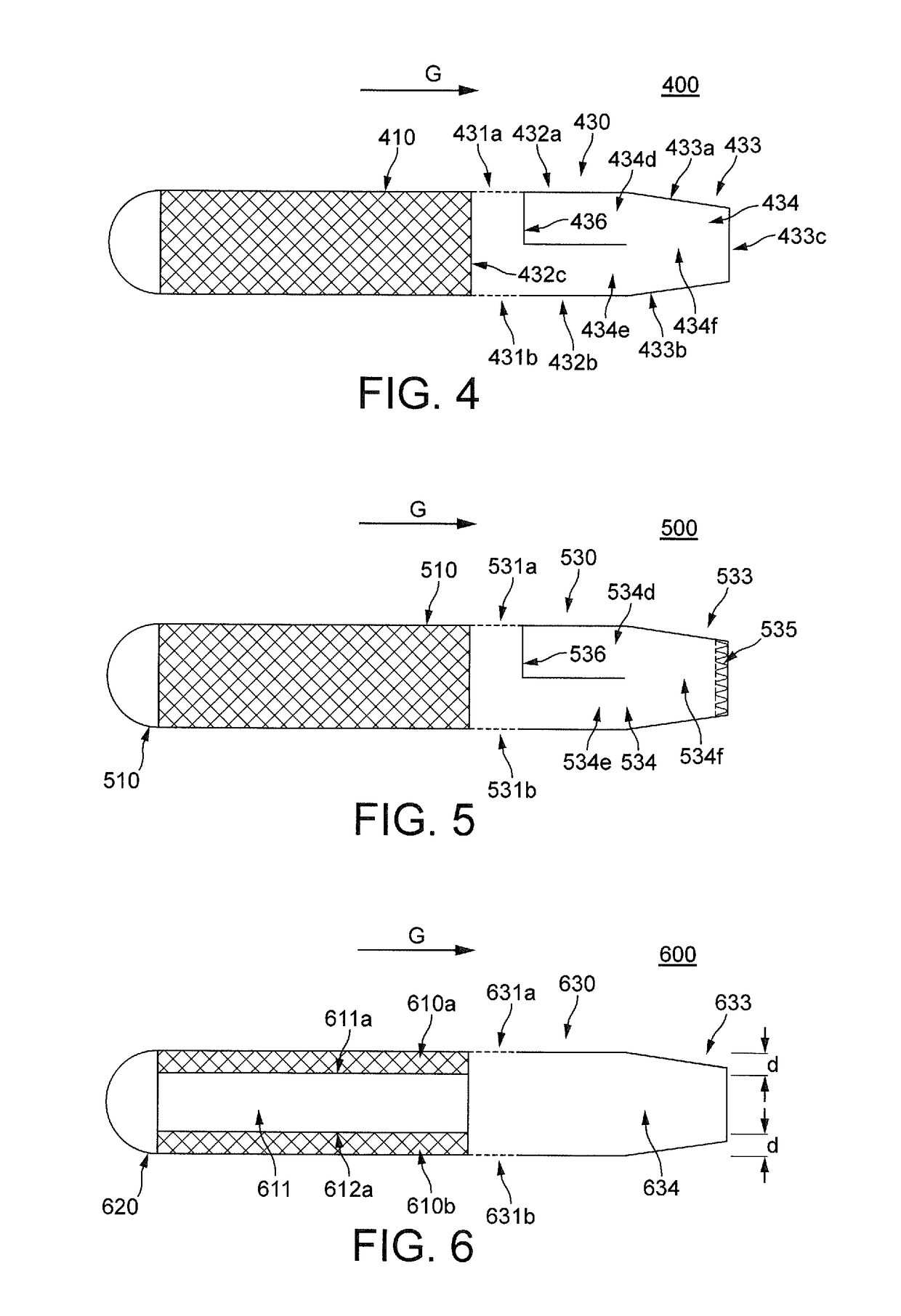Sound suppression apparatus
a technology of sound suppression and apparatus, which is applied in the direction of sound producing devices, fuel intake silencers, domestic heating details, etc., can solve the problems of large quantities of undesirable noise, large amounts of undesirable noise, and large amounts of undesirable noise, and achieve high levels of targeted low-frequency control, good broadband performance, and high efficiency
- Summary
- Abstract
- Description
- Claims
- Application Information
AI Technical Summary
Benefits of technology
Problems solved by technology
Method used
Image
Examples
first embodiment
[0075]According to the present invention, there is provided a sound suppression apparatus as shown in FIG. 1.
[0076]FIG. 1 shows a sound suppression apparatus 100 having a configuration similar to the baffle 2500 of FIG. 25. Where the configuration is the same or similar, no further detail will be given, and the reader is referred to the corresponding elements of the baffle 2500 of FIG. 25.
[0077]The sound suppression apparatus 100 has a mass of resistive sound-absorbing material 110 arranged between a cap portion 120 in an upstream direction of gas flow G and a housing 130 arranged in a downstream direction of gas flow G, in a similar manner as baffle 2500 shown in FIG. 25.
[0078]As for baffle 2500 in FIG. 25, in the cross-section shown in FIG. 1, the resistive sound-absorbing material has straight, generally parallel sides, to permit the gas to flow smoothly and aerodynamically past. Aerodynamic flow, as herein discussed, refers to substantially laminar flow in a direction of elongat...
eighth embodiment
[0118]In some configurations, the further void provided between partition 1333e and trailing end wall 1333c can be used to provide a further reactive sound-attenuating element of the type shown in any of the preceding embodiments. Such a configuration having a further resonator can, in a similar manner to the eighth embodiment shown in FIG. 9, allow two frequencies to be addressed by two appropriately-tuned cavity resonators.
[0119]FIG. 14 shows a thirteenth embodiment of the present invention, having a further modified resonator configuration within housing 1430. The configuration of FIG. 14 provides two L-shaped partition members 1434a, 1434b, one extending inwardly from wall 1432a and then extending rearwardly towards trailing end wall 1433c, the other extending inwardly from tapered wall 1433b towards tapered wall 1433a and then extending forwardly towards end wall 1432v. The effect of providing two partition members as shown in FIG. 14 is to lengthen the resonant path in resonan...
PUM
 Login to View More
Login to View More Abstract
Description
Claims
Application Information
 Login to View More
Login to View More - R&D
- Intellectual Property
- Life Sciences
- Materials
- Tech Scout
- Unparalleled Data Quality
- Higher Quality Content
- 60% Fewer Hallucinations
Browse by: Latest US Patents, China's latest patents, Technical Efficacy Thesaurus, Application Domain, Technology Topic, Popular Technical Reports.
© 2025 PatSnap. All rights reserved.Legal|Privacy policy|Modern Slavery Act Transparency Statement|Sitemap|About US| Contact US: help@patsnap.com



